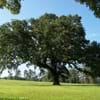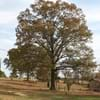Life Span
Perennial
Perennial
Origin
United States, California, Mexico
Northeastern United States, Mid-Atlantic United States, Southeastern United States, North-Central United States, Central United States, South-Central United States, Canada
Types
Standard Live Oak, Highrise Live Oak, Cathedral Live Oak
Ashford Oak, Chase Creek Red Oak, Shera-Blair Red Oak
Habitat
Not Available
Sandy areas, Upland, Wooded slopes, Woodlands
USDA Hardiness Zone
9-11
3-9
Sunset Zone
7, 8, 9, 14, 15, 16, 17, 18, 19, 20, 21, 22, 23, 24
1a, 1b, 2a, 2b, 3a, 3b, 4, 5, 6, 7, 8, 9, 10, 11, 12, 14, 15, 16, 17, 18, 19, 20, 21, 22, 23, 24
Habit
Spreading
Oval or Rounded
Flower Color
Red, Light Green
Yellow green
Flower Color Modifier
Bicolor
Bicolor
Fruit Color
Tan, Brown
Brown, Sienna
Leaf Color in Spring
Green
Green, Dark Green
Leaf Color in Summer
Dark Green
Green, Dark Green
Leaf Color in Fall
Dark Green
Red, Brown, Dark Red, Bronze
Leaf Color in Winter
Dark Green
Not Available
Leaf Shape
Ovate
Maple shaped
Plant Season
Spring, Summer, Fall, Winter
Spring, Summer, Fall
Sunlight
Full Sun, Partial Sun
Full Sun, Partial Sun, Partial shade, Full Shade
Type of Soil
Clay, Loam, Sand
Clay, Loam, Sand
The pH of Soil
Acidic, Neutral
Acidic, Neutral
Soil Drainage
Well drained
Well drained
Bloom Time
Early Spring
Spring
Tolerances
Pollution, Drought, Salt
Pollution, Drought, Salt
Where to Plant?
Ground
Ground
How to Plant?
Stem Planting, Transplanting
Seedlings, Stem Planting
Plant Maintenance
Low
Medium
Watering Requirements
Water Deeply
Do Not over Water
In Summer
Ample Water
Lots of watering
In Spring
Average Water, Ample Water
Moderate
In Winter
Once a week
Average Water
Soil pH
Acidic, Neutral
Acidic, Neutral
Soil Type
Clay, Loam, Sand
Clay, Loam, Sand
Soil Drainage Capacity
Well drained
Well drained
Sun Exposure
Full Sun, Partial Sun
Full Sun, Partial Sun, Partial shade, Full Shade
Pruning
Don't prune in the fall, Remove dead branches
Remove damaged leaves, Remove dead branches, Remove dead leaves
Fertilizers
All-Purpose Liquid Fertilizer, Compost, Fertilize the first year, High-phosphorous fertilizers used
Don't fertilize within a year of planting
Pests and Diseases
Red blotch
Borers, Caterpillars, Galls, Moth, Red blotch, Scale
Plant Tolerance
Drought, Pollution, Salt
Drought, Pollution, Salt
Flowers
Insignificant
Insignificant
Flower Petal Number
Not Available
Not Available
Foliage Texture
Medium
Coarse
Foliage Sheen
Matte
Matte
Attracts
Birds, Butterflies
Birds, Butterflies
Allergy
Not Available
Not Available
Aesthetic Uses
Not Used For Aesthetic Purpose
Showy Purposes
Beauty Benefits
Not Available
Not Available
Environmental Uses
Air purification
Air purification
Medicinal Uses
No Medicinal Use
Not Available
Part of Plant Used
Bark, Root
Whole plant
Other Uses
Used in construction, Wood is used for making furniture
Used as Ornamental plant
Used As Indoor Plant
No
No
Used As Outdoor Plant
Yes
Yes
Garden Design
Feature Plant, Hedges, Shade Trees, Street Trees
Shade Trees, Street Trees
Botanical Name
QUERCUS agrifolia
QUERCUS rubra
Common Name
California Live Oak
Northern Red Oak
In Hindi
पुरान बलूत
उत्तरी लाल ओक
In German
Live Oak
Roteiche
In French
Live Oak
chêne rouge
In Spanish
roble vivo
el roble rojo del norte
In Greek
live oak
βόρειο κόκκινο δρυς
In Portuguese
carvalho vivo
carvalho vermelho do norte
In Polish
Live Oak
dąb czerwony
In Latin
live quercu
Quercus rubra
Phylum
Tracheophyta
Magnoliophyta
Class
Magnoliopsida
Magnoliopsida
Clade
Angiosperms, Eudicots, Rosids
Angiosperms, Eudicots, Rosids
Tribe
Not Available
Not Available
Subfamily
Not Available
Not Available
Number of Species
Not Available
Not Available
Importance of Live Oak and Northern Red Oak
Want to have the most appropriate plant for your garden? You might want to know the importance of Live Oak and Northern Red Oak. Basically, these two plants vary in many aspects. Compare Live Oak and Northern Red Oak as they differ in many characteristics such as their life, care, benefits, facts, etc. Every gardener must at least have the slightest clue about the plants he wants to plant in his garden. Compare their benefits, which differ in many ways like facts and uses. The medicinal use of Live Oak is No Medicinal Use whereas of Northern Red Oak is Not Available. Live Oak has beauty benefits as follows: Not Available while Northern Red Oak has beauty benefits as follows: Not Available.
Compare Facts of Live Oak vs Northern Red Oak
How to choose the best garden plant for your garden depending upon its facts? Here garden plant comparison will help you to solve this query. Compare the facts of Live Oak vs Northern Red Oak and know which one to choose. As garden plants have benefits and other uses, allergy is also a major drawback of plants for some people. Allergic reactions of Live Oak are Not Available whereas of Northern Red Oak have Not Available respectively. Having a fruit bearing plant in your garden can be a plus point of your garden. Live Oak has showy fruits and Northern Red Oak has no showy fruits. Also Live Oak is not flowering and Northern Red Oak is not flowering . You can compare Live Oak and Northern Red Oak facts and facts of other plants too.





